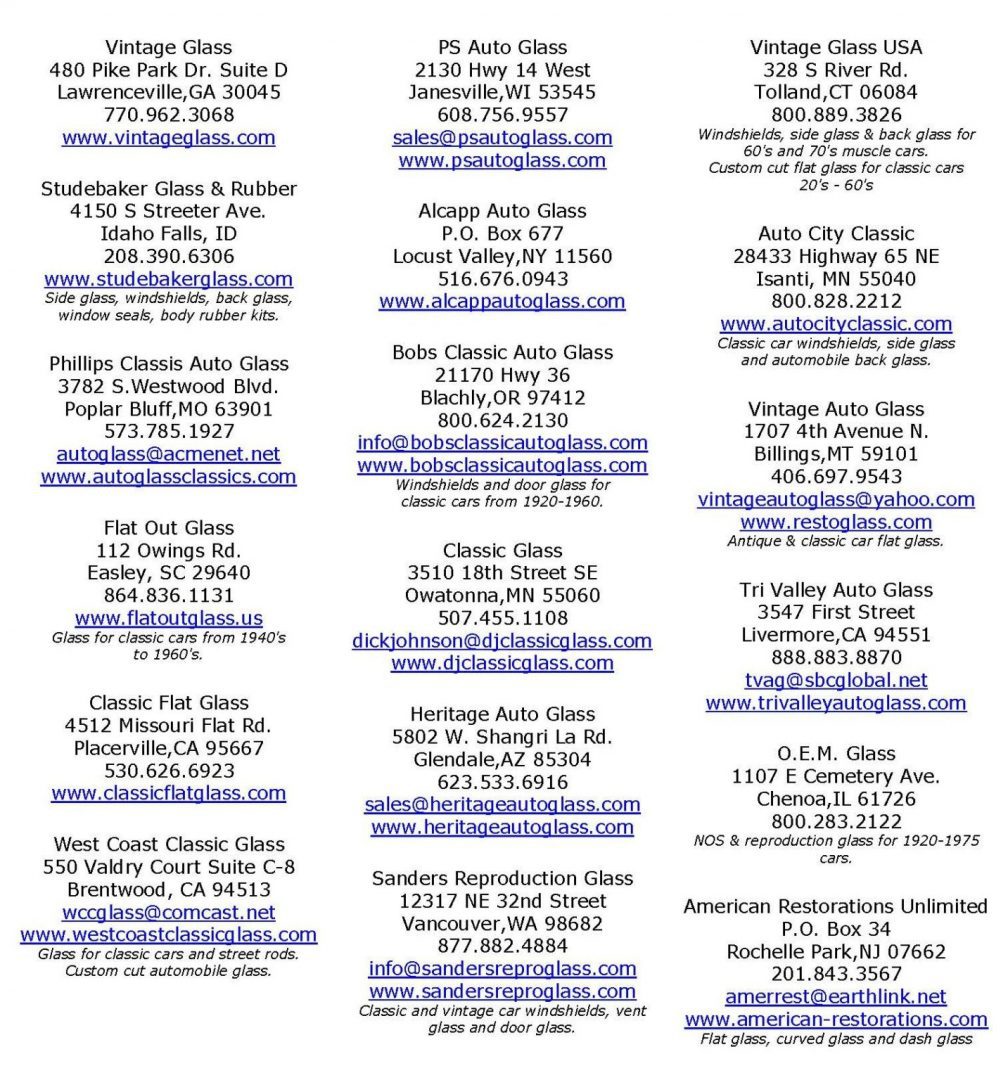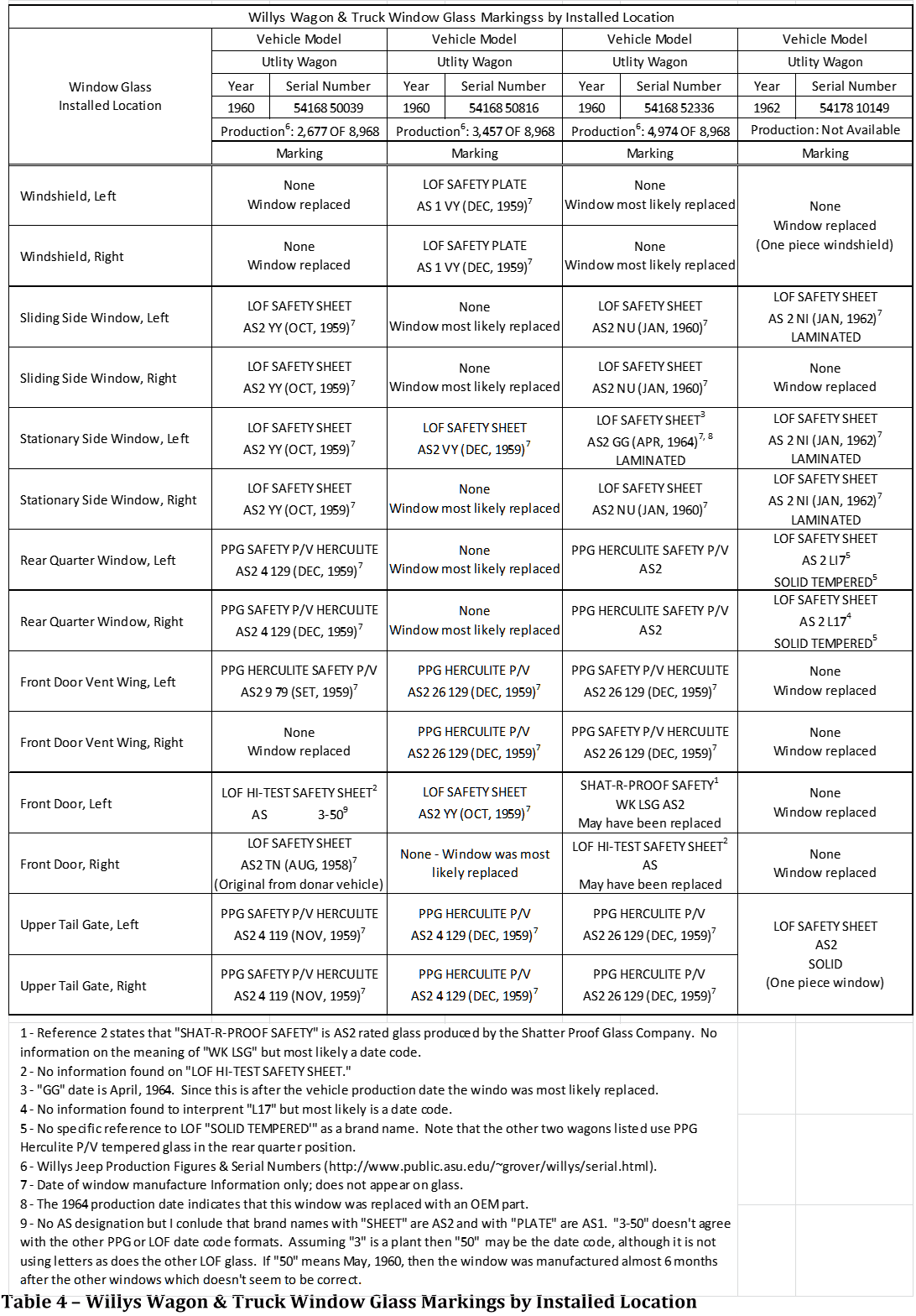Contents
THE USUAL SUPPLIERS
My project was ready for window glass so I went to a couple of the usual sources; Walck’s 4 Wheel Drive and Kaiser Willys Auto Supply, INC to compare prices. The cost difference to purchase the necessary 14 windows individually was less than three percent, with Walck’s being the less expensive. Each supplier offers a kit that includes the 14-piece glass set for considerably less cost. However, Walck’s kit cost is about 12% less that the KW kit.
OTHER CHOICES
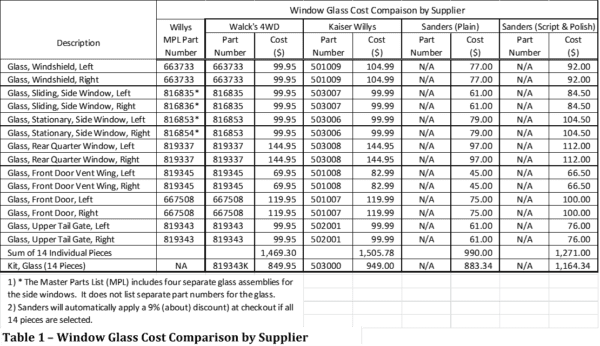
Before ordering I decided to look into a couple of the many alternative window glass sources. By chance I came across Sanders Reproduction Glass. They list our vehicles and have a very easy to use on-line ordering and cost estimating tool. As I went through the process of ordering I saw that they provided some configuration choices such as tint, material, thickness, edge finish, and script. I am familiar with tint and edge finish but the script option was new to me and I had never thought about material choices. Here is a summary of information from their site.
- Tint: Clear and two available tint colors
- Material: Tempered or Laminate. Tempered glass breaks into small, fairly harmless pieces. Laminate helps with keeping passengers in the vehicle during an accident and also helps keep people from simply breaking a window. My 2012 vehicle has a laminate windshield and tempered side and rear windows (I think that is pretty common). My wagon has laminate glass all around. Both Walck’s and KW sell 1/4” thick laminated glass.
- Thickness: 1/4 inch. No other thickness is available.
- Edge Finish: Ground or Polished. Polished edges on exposed glass, such as the exposed top edge of door windows, looks very nice.
- Script: None, DOT or Custom. When choosing no script they mention that some States require markings that identify the installed glass as safety glass for transfer of title. DOT is a default script that probably meets those pesky title transfer requirements. Custom is just that – they apply whatever you wish, generally the OEM markings.
Sanders individual piece cost is about 25% less than either Walck’s or KW. Their kit cost is less than KW and about $30 more than Walck’s. If edge polishing and scripting is added the by-the-piece cost difference drops to 10 percent. Polished and scripted glass adds about $300 to the cost of their kit.
WINDOWS IN MY 1960 UTILITY WAGON; SN 5416850039 (2,677 OF 8,968 BUILT IN 1960)
Spending some time on Sanders site prompted me to take a closer look at my window glass. I had seen writing and logos on auto glass but never considered what it meant. The glass is something I took for granted and never paid attention to it; but now I was determined to understand the meaning of the window markings.
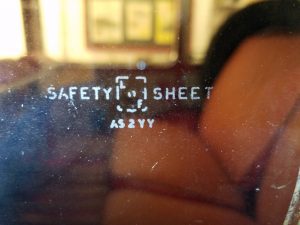
Sometime around 1980 I replaced the windshield and left vent window. At that time I simply took the cracked windows to a local glass shop and asked to make replacement pieces. Looking at them now, I see they are 1/4″ thick laminated glass with no markings. I’m pretty sure it is safety glass but could not prove it if necessary. The remaining eleven windows are original and do have markings on them. About three years ago I replaced the right door window with a used window from a wagon of unknown year and model so it is marked but not dated to my wagon.
DECODING THE LOF GLASS MONOGRAM
Figure 1 show the marking on the left side stationary and fixed windows. The mark measures 1-17/32” wide x 1/2” high. These are read from the outside (considered to be standard practice). The right side stationary and fixed windows have identical markings but are read from the inside.
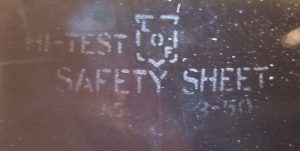
Figure 2 shows the driver door marking. The letters “LOF” that appear diagonally in the dashed rectangle stand for Libbey-Owens Ford. “The Libbey-Owens-Ford Company (LOF) was a producer of flat glass for the automotive and building products industries both for original equipment manufacturers and for replacement use. The company’s headquarters and main factories were located in Toledo, Ohio.” 1
Table 4, is a summary of all window marking on my wagon. Monograms from three other vehicles are also shown in the table.I didn’t find information specific to Willys wagons and trucks that explained how to decode window markings, so I used the followinginformation from authors that researched Ford and General Motors glass monographs. Since most the data presented here is the same for both car company vehicles I decided to make a leap of faith and assume it’s valid for Willys wagons and trucks.
“LOF” – The Libbey-Owens-Ford Company
“SAFETY SHEET” – LOF brand name for their AS2 laminated glass. “SAFETY PLATE” is another brand name used for their laminated glass but is designated as “AS 1” when used for windshields.
“AS 2” – Glass performance standard and date code.
“AS” – The AS (or American Standard) glass codes are listed in the ANSI Z26 standard classification of motor vehicle glass produced by the Society of Automotive Engineers (SAE). Note that ANSI Z26 is a “performance” standard that sets minimum requirements for the functional performance of a product, rather than a manufacturing description of the product; in other words, it doesn’t tell manufacturers how to make the glass but rather what functions the glass must perform. While a number of motor vehicle glasses are listed in this standard, for first-generation Camaros there are only two classifications that apply:
AS 1 Laminated glass, windshield only
Must pass the various ANSI Z26 tests/requirements for windshields, which include impact standards and a minimum of 70% light transmissibility.
AS-1 glass is typically composed of two pieces of 1/8-inch glass laminated on either side of 0.030-inch of PVB plastic.
AS 2 Laminated or tempered glass, side/rear only [anywhere behind the A-pillar]
This glass is required to pass ANSI Z26 tests for side glass, including side impact requirement and a minimum of 70% light transmissibility. This glass is typically composed of one sheet of thick tempered glass (Solid Tempered) or (not seen on

Camaros) two layers of thinner glass laminated to either side of a 0.015-inch PVB plastic core.2
“Y Y” – Date code in accordance with Table 2
Using Table 2, the stationary and fixed side glass in my 1960 wagon was manufactured in October of 1959.
DECODING THE PPG GLASS MONOGRAM
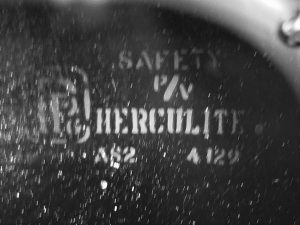
Figures 3, 4 & 5 show the markings on rear quarter, tail gate and vent windows respectively. The marking is about 1” wide by about 1/2″ high. I have no information as to why two different glass suppliers were used or why they were chosen to supply glass for a specific window.
Pittsburg Plate Glass Company (PPG) launched Herculite in 1938. As a tempered glass, Herculite would crumble instead of shatter. Tempered glass was made by heating and then quickly cooling float glass. Tempered glass would go on to be widely used in non-windshield applications, even to this day.
My PPG supplied windows included “P/V” in the marking. I spent considerable time researching the marking but was unsuccessful.
However I did find a document, available from the Virginia State Police (VSP) that lists
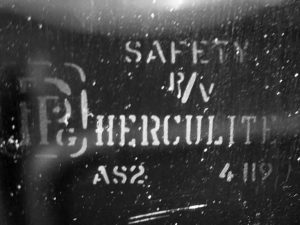
automobile class suppliers and their respective brand names with applicable AS rating. Also included is a table of window marking for each company.
The VSP document lists Safety P/V Herculite as a brand name but doesn’t provide any insight to the “P/V” meaning. The included table of markings also doesn’t include the markings shown in Figures 1, 2 & 3. According to the document, Safety P/V Herculite is only rated for AS2 applications which explains its exclusive use in side windows.
To understand the PPG markings I once again relied upon the information presented in Reference 2, the 1967-1969 Camaro OEM Window Glass report.
“PPG” – Pittsburg Plate Glass Company
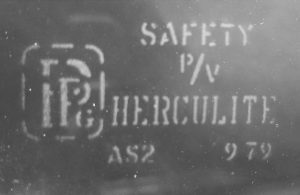
“SAFETY P/V HERCULITE” – PPG brand name
for their AS2 laminated tempered glass. No information as to the “P/V” designation.
“AS 2” – Laminated or tempered glass for side and rear use only. AS 2 is further explained in the previous section on LOF glass.
“4119” – PPG plant and date code.
“4” – PPG plant code. Table 2 lists seven PPG plant codes, none of which agrees with the codes 4129, 4119. & 979 shown in Figures 3, 4, & 5 respectively.
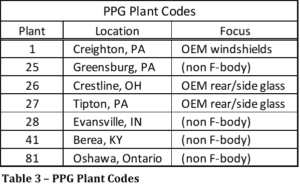
Here is a reference to PPG plant No. 4 in Ford City, PA. I can’t confirm it is where my windows were produced but I am going to assume so unless proven differently. Although I didn’t find a reference to plant 9, I did find one other, now closed, in Charleroi, Pennsylvania: Pittsburg Plate Glass Factory PPG #6, shown on the post card. There are other closed plants such as this one in Mount Vernon, OH; Pittsburgh Plate Glass Company (PPG) – Opened 1907 – Shuttered 1976 (plant number not indicated). It may be wishful thinking but I am making the leap of faith that there were PPG plants 4 and 9 that once produced window glass for Willys.
“119” – Date code in two-digit month and single-digit year format. In this example “119” translates to November, 1959.
SUMMARY
The 11 original windows in my wagon are made by PPG and LOF. PPG used “Safety P/V Herculite” in the vent, upper tail gate and rear quarter windows. LOF used “Safety Sheet” in the four side windows and “Hi-Test Safety Sheet” in the door windows. The windshield (replaced with unmarked glass) would have most likely use LOF “Safety Plate.” It is my opinion that glass is marked “AS1” if “Plate” appears in the brand name and “AS2” if “Sheet” is in the brand name. I mention this because some marks only include “AS” without including “1” or “2”.
Side window monograms are read from the outside on the driver side and from the inside on the passenger side. The driver side of the two-piece windshield is read from the outside and the passenger side from the inside. The two-piece upper tailgate monograms are read from the outside on the driver side and from the inside on the passenger side. This is considered standard practice with regard to window installation.
Table 4, on the next page (last three columns), shows that the window date codes for the other three vehicles listed are latter than those appearing on my vehicle. That makes sense since my wagon has an earlier serial number. I am fairly confident of my widows marking interpretations but am looking forward to adding more vehicles to Table 4. I also hope that this paper will prompt others to provide additional information with which to validate the assumptions.
My Willys is not completely original but I do everything I can to keep it as close as possible. So, if for less money I can replace the glass with something that mimics the original glass, why not do it? Buying glass from Sanders allows me to add polishing to exposed edges and include the OEM markings. Edge polishing is not original but I classify it as an “over-restoration” rather than a modification. An unmarked window is in the non-original category.
Another consideration is safety. As mentioned earlier, some States may require proof that the glass meets DOT safety standards. When I asked the usual suppliers if they could provide evidence that their window glass met DOT standards the answer was “No.”
All that is needed is the creation of the appropriate window marking. I’ve completed the LOF AS2 mark and working on the PPG mark. Once completed, I’ll upload the files to Sanders’ site and they will apply the marks appropriately. For single (anything less than a kit of 14 windows) pieces, even with polishing and marking, Sanders cost is still less than that charged by the usual suppliers.
It’s nice to have an option.
WINDOW GLASS SUPPLIERS
